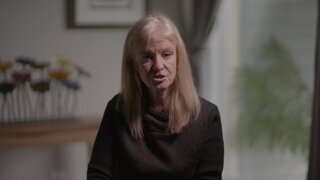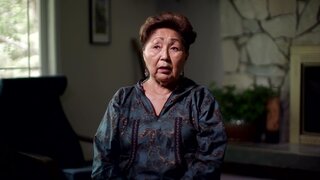'I Believe He Was Gonna Kill Again': Alaska Cop Murders Native Girl, Then Stages Attack On Himself
Sonya Ivanoff was just 19 when she vanished while walking back home in Nome, Alaska
Sonya Ivanoff left her home the night of August 10, 2003 to have a fun time with friends. But she'd never return to her home in Nome, Alaska.
On August 12, Ivanoff's roommate contacted the Nome Police Department to report Ivanoff missing. They had gone out with friends, but around 1 a.m., Ivanoff, a 19-year-old Native woman, said she wasn't feeling well and decided to walk home. She hadn't been seen since.
Ivanoff, who was one of six kids and described as a "goofy" and "fun," had moved to Nome just a year prior. She had wanted to go to Hawaii for school in the fall and was saving up money, according to family.
"Sonya was very prominent in the community. She was very well known in the [surrounding communities] as a very good basketball. She was known and liked," Eric Burroughs, a former Alaska state trooper, told "Fatal Frontier: Evil In Alaska," airing Sundays at 7/6c and 8/7c on Oxygen.
It wasn't like her just to disappear. And when authorities searched her home, they discovered all of her belongings were still there. A search and rescue team acted swiftly.
Ivanoff's body was found in a gravel pit, naked except for one sock. She had been shot in the head.
Police started reviewing suspects, zeroing in on a boy Ivanoff sometimes dated who had a bad reputation. They had no hard evidence against him though, and he was soon cleared as a suspect. Then, investigators received a disturbing tip.
A woman called in a tip that she had seen Ivanoff the night she disappeared walking alone on the street. A police car had pulled up to her, and after a brief moment of conversation, Ivanoff entered the car.
Weeks later, on the night of September 24, a police car, number 321, went missing. Authorities went out to look for the stolen vehicle, Byron Redburn, a retired officer with the Nome Police Department, told producers. Redburn was then contacted by a police officer named Matt Owens, who was at Bessie Pit, a sand and gravel mine.
"Over the radio came Officer Owens saying there’d been shots fired and they’re shooting at Officer Owens," Redburn recalled.
Redburn raced to the scene and found Owens uninjured. No one else was there. But the windows to the police car had been broken, and inside was an envelope. The envelope contained Ivanoff's missing ID card and a threatening letter.
"Pigs. I hate cops, I hate everyone one of you," the letter read, according to "Fatal Frontier: Evil In Alaska," and threatened officers to back off the Ivanoff investigation.
But the Alaska State Police had questions about the incident at Bessie Pit. When they tried to reenact it, they found it was basically impossible to have happened the Owens described it.
"What happened at the gravel pit with the 321 incident wasn’t adding up. We believed the incident was staged by Owens," Burroughs told producers.
Owens was one of two officers on duty the night Ivanoff vanished. The other officer showed up promptly for a polygraph test and passed. Owens, meanwhile, "failed miserably."
When Owens was brought in for questioning, he denied having anything to do with Ivanoff's murder and insisted he hadn't faked the 321 incident.
“You would have been dead, man. We would have been investigating a murder. There is no way on God’s green earth this guy would have missed you,” an investigator is heard telling Owens' during a tape of the interview, obtained by "Fatal Frontier: Evil In Alaska."
Still, Owens maintained his innocence. Authorities, though, had plenty of evidence against him and Owens was arrested October 25, 2003.
After news of his arrest broke, numerous women came forward to say Owens had sexually harassed them while he was on duty, and threatened to kill them if they ever told.
"We were informed he told them no one would believe a drunk active female over a police man," Burroughs told producers.
There was no evidence Ivanoff was sexually assaulted. Investigators told "Fatal Frontier" they suspect that while Owens was on patrol, he noticed Ivanoff and propositioned her for sex. When she refused, he realized she wasn't drunk and would have more credibility if she reported him. A confrontation then occurred, and he killed the 19-year-old.
"I never thought I would lose a daughter to a policeman. They’re supposed to protect. It kind of messed up my trusting police officers," Ivanoff's mother told producers.
Owens had also been spotted burning things around the time Ivanoff was killed. When investigators examined the burn pit, they found buttons that matched the brand of jeans Ivanoff was last seen wearing, as well other remnants of burnt clothing.
On November 4, 2003, Owens was indicted on murder in the first-degree. However, the first trial in 2005 ended with a hung jury and a mistrial was declared.
"I knew from beginning Nome wasn’t the place to have the trial. Jurors had attended the same church as Matt Owens. I knew there could be some kind of buddy buddy system going on there," Sonya's brother, Jacob Ivanoff, told produvers.
The trial location was moved, and later that year, Matthew Owens was finally found guilty of the murder of Sonya Ivanoff. He was sentenced to 101 years in prison.
In 2007, the Sonya Ivanoff Bill was signed into law. The law mandates a maximum sentence for first-degree murder to any officer who murders someone while on duty.
"Matt Owens was a predator. I believe he was gonna kill again. We probably got a serial killer on the first one," Burroughs said.
For more on this case and others like it, watch "Fatal Frontier: Evil In Alaska," airing Sundays at 7/6c and 8/7c on Oxygen.























